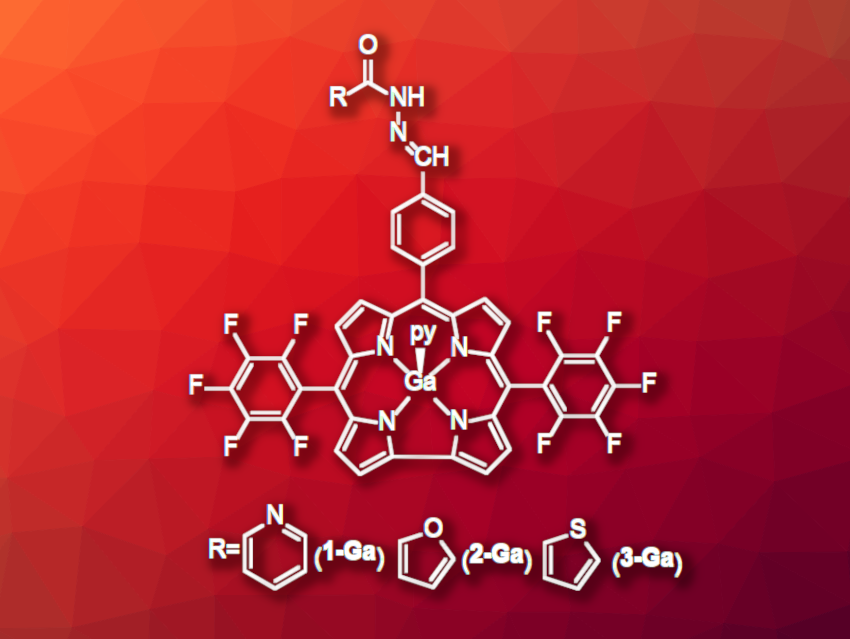Photodynamic therapy is a promising approach to cancer treatment. It works by using photosensitizers that selectively accumulate in tumors and activating them with light. Then they produce reactive oxygen species, which kill cancer cells. The development of improved photosensitizers for photodynamic therapy is, thus, an interesting research target. Macrocycles such as porphyrins and phthalocyanines can be useful in this context. Corrole is a porphyrin analog with similar chemical properties and may be a good candidate for new photodynamic therapy drugs.
Hai-Yang Liu, South China University of Technology, Guangzhou, China, Yu-Hui Liao, Southern Medical University, Guangzhou, China, Xi-Hao Zhong, Guangzhou Quality Supervision and Testing Institute, China, and colleagues have synthesized a series of gallium (III) amide corroles (pictured) and tested their photodynamic antitumor activities. The team prepared meso-5,15-bis(pentafluorophenyl)-10-(4-pyridinamide-phenyl)corrole gallium (III) (1-Ga), meso-5,15-bis(pentafluorophenyl)-10-(4-furamide-phenyl)corrole gallium(III) (2-Ga), and meso-5,15-bis(pentafluorophenyl)-10-(4-thiophenamide-phenyl)corrole gallium (III) (3-Ga).
The corrole ligands were prepared from meso-5,15-bis(pentafluorophenyl)-10-(4-formylphenyl)corrole using reactions with isonicotinohydrazide, furan-2-carbohydrazide, or thiophene-2-carbohydrazide. The gallium complexes 1-Ga, 2-Ga, and 3-Ga were then obtained from gallium chloride and the corresponding corroles, which were reacted in pyridine (py).
The team then studied the interaction of these complexes with DNA and their photodynamic antitumor activities. They found that all three gallium(III) amide corroles could efficiently generate singlet oxygen under light irradiation and bind to DNA. 2-Ga showed excellent photodynamic antitumor activity under light irradiation, e.g., against HepG2 cells, a human liver cancer cell line.
- Gallium(III) Amide Corroles: DNA Interaction and Photodynamic Antitumor Activity,
Meng-Yuan Li, Wu Yang, Jing-He Cen, Ling-Gui Liu, Gang Yang, Hai-Yang Liu, Yu-Hui Liao, Xi-Hao Zhong,
ChemPlusChem 2023.
https://doi.org/10.1002/cplu.202200413




